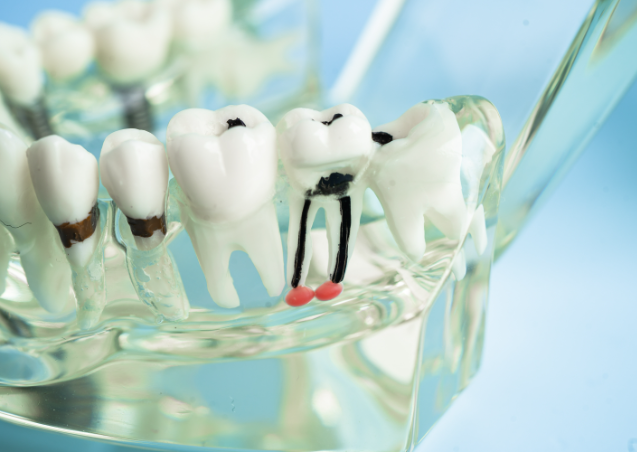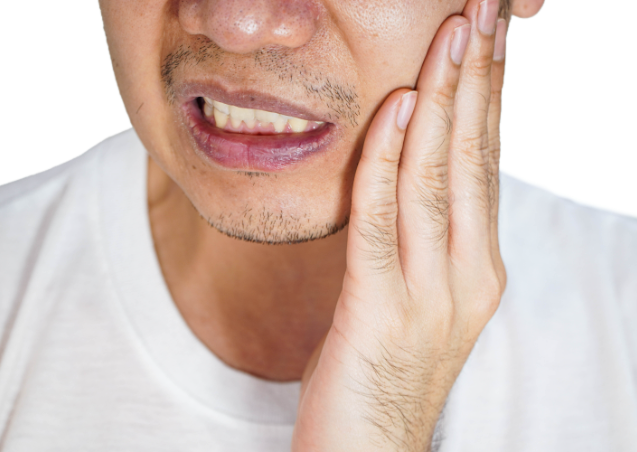
A root canal is a dental procedure involving the removal of the soft centre of the tooth, the pulp. The pulp is made up of nerves, connective tissue, and blood vessels that help the tooth grow.
In majority of the cases, a general dentist or endodontist will perform a root canal while you're under local anaesthesia.
A root canal is performed when the soft inner part of a tooth, known as the pulp, is injured or becomes inflamed or infected.
The crown of the tooth - the part you can see above your gums - can remain intact even if the pulp is dead. Removing injured or infected pulp is the best way to preserve the structure of the tooth.

A root canal is performed when the soft inner part of a tooth, known as the pulp, is injured or becomes inflamed or infected. The crown of the tooth - the part you can see above your gums - can remain intact even if the pulp is dead. Removing injured or infected pulp is the best way to preserve the structure of the tooth.
Common causes of damage to the pulp include :
A root canal is performed in a dental office. When you arrive for your appointment, a technician will escort you to a treatment room, help you get situated in a chair, and place a bib around your neck to protect your clothes from stains.
A root canal is performed in a dental office. When you arrive for your appointment, a technician will escort you to a treatment room, help you get situated in a chair, and place a bib around your neck to protect your clothes from stains.
The dentist will place a small amount of numbing medication on your gum near the affected tooth. Once it has taken effect, a local anaesthetic will be injected into your gums. You may feel a sharp pinch or a burning sensation, but this will pass quickly.
You'll remain awake during the procedure, but the anaesthetic will keep you from feeling any pain.
When your tooth is numb, the endodontist or general dentist will make a small opening in the top of the tooth. Once the infected or damaged pulp is exposed, the specialist will carefully remove it using special tools called files. They'll be particularly careful to clean out all the pathways (canals) in your tooth.
Once the pulp has been removed, the dentist may coat the area with a topical antibiotic to ensure that the infection is gone and to prevent reinfection. Once the canals are cleaned and disinfected, the dentist will fill and seal the tooth with a sealer paste and rubber-like material called gutta percha. They also may prescribe you oral antibiotics.
The dentist will end the procedure by filling the small opening in the top of the tooth with a soft, temporary material. This sealant helps prevent the canals from being damaged by saliva.
Your tooth and gums might feel sore when the numbing medication wears off. Your gums may also swell. Most dentists will have you treat these symptoms with over-the-counter pain medications such as Ketorolac (KETOROL DT) or Aceclofenac, Paracetamol combination (ZERODOL P). Call your dentist if the pain becomes extreme or lasts for more than a few days.
Your tooth and gums might feel sore when the numbing medication wears off. Your gums may also swell. Most dentists will have you treat these symptoms with over-the-counter pain medications such as Ketorolac (KETOROL DT) or Aceclofenac, Paracetamol combination (ZERODOL P). Call your dentist if the pain becomes extreme or lasts for more than a few days.
You should be able to resume your normal routine the day after the procedure. Avoid chewing with the damaged tooth until it's permanently filled or a crown is placed over the top.
You'll see your regular dentist within a few days of the root canal. They'll take X-rays to make sure that any infection is gone. They'll also replace the temporary filling with a permanent filling.
If you prefer, the dentist may place a permanent crown on the tooth. Crowns are artificial teeth that can be made from porcelain or gold. The benefit of a crown is its realistic appearance.
A root canal is considered a restorative procedure. Most people who undergo the procedure are able to enjoy positive results for the rest of their lives. Still, how long results last depends on the way you take care of your teeth.
Just as the rest of your teeth depend on good oral hygiene habits, your restored tooth requires regular brushing and flossing as well.
It may take you several weeks to get used to how the tooth feels after the procedure. This is normal and no cause for concern.